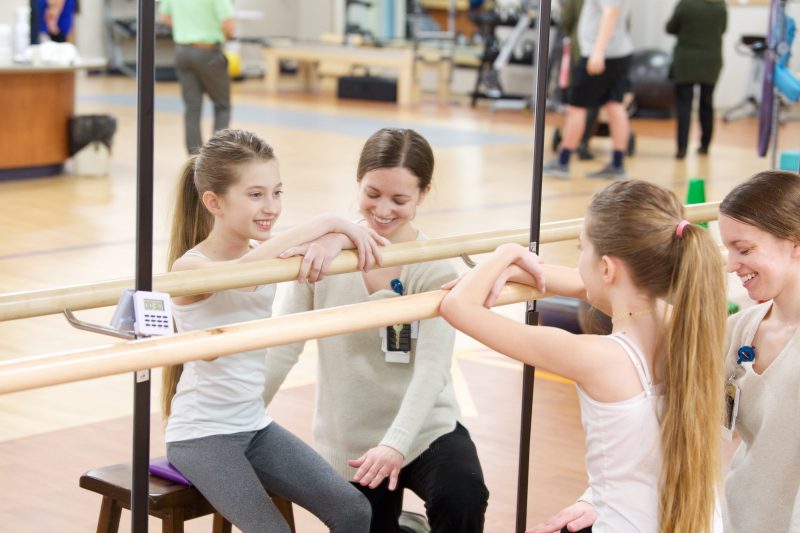
Prior to the COVID-19 pandemic, Elle Tamulewicz worked with physical therapist, Jessica Churbock, who is specially trained in the Schroth method of physical therapy for treating scoliosis.
In July 2019, Melanie Tamulewicz took her 9-year-old daughter, Elle, in for what she thought would be a routine well visit with pediatrician Dr. Cheryl Markle. Instead of being sent on their way with a ‘see you next year,’ the Tamulewiczs left with a referral to one of Akron Children’s spine specialists.
“When Dr. Markle mentioned scoliosis – I didn’t see that coming,” said Melanie. “It wasn’t something that was even on our radar.”
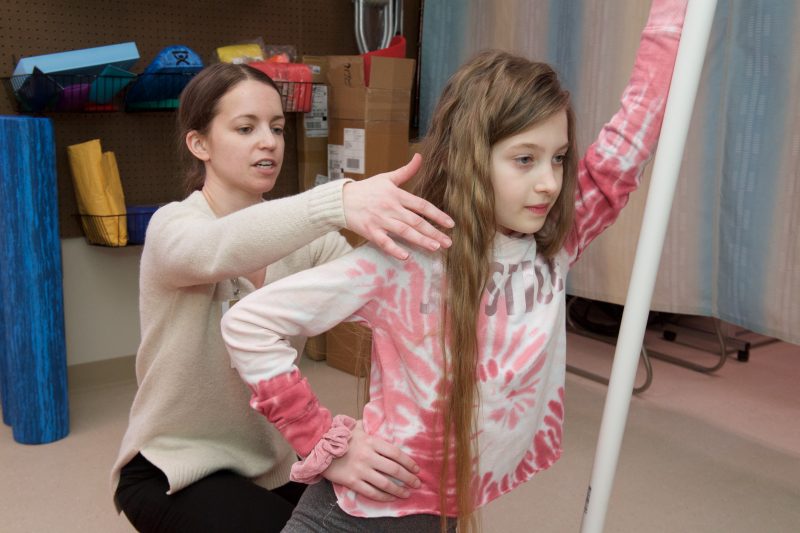
Elle’s long hair helped hide her spinal curve, making it less noticeable and a surprise to her parents when she was diagnosed with scoliosis.
With very long hair that covered her back, and a tall and lean dancer’s body, Melanie and her husband, James, never noticed any kind of curve on Elle’s spine. Elle sometimes complained that her back or legs would hurt after walking a lot, but Melanie always chalked it up to growing pains.
“It wasn’t the kind of pain that would drive us to go to the doctor,” she said.
In preparation for their specialist appointment, Melanie and James dove into researching scoliosis.
“We asked a lot of questions at the appointment,” said Melanie. “We wanted to be aggressive, but our doctor (Dr. Todd Ritzman) said some of the more aggressive approaches like bracing too early can cause the patient to burn out and be less compliant later. This was when he suggested a new treatment approach the hospital was starting called Schroth physical therapy.”
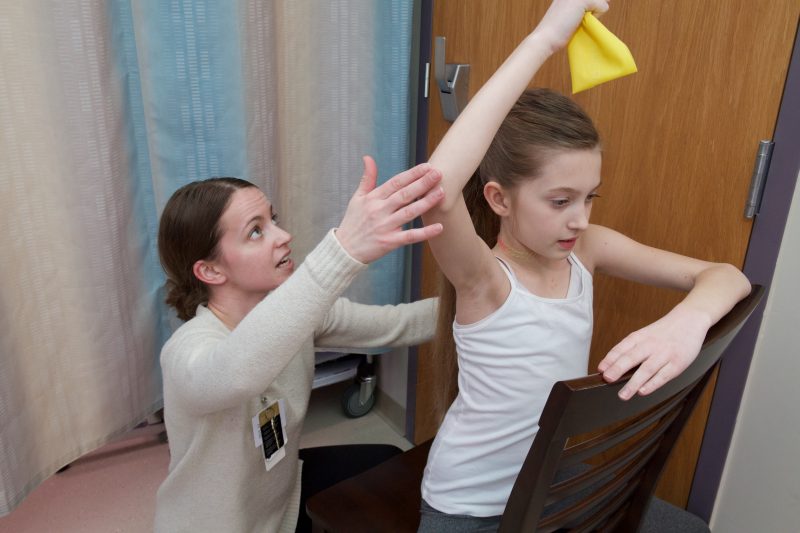
Elle’s moderate 22 degree curve made her a perfect candidate for Schroth therapy.
Schroth is a century old technique that uses customized exercises and a 3-dimensional approach to help elongate and stabilize the spine in patients with scoliosis, especially those with mild to moderate curves who are not done growing. Elle’s curve was 22 degrees.
The nonsurgical approach to idiopathic scoliosis uses hands-on techniques to actively correct behaviors that could contribute to making a curve worse.
“We use activities of daily living to educate our patients on better postural awareness,” said Jessica Churbock, Elle’s Schroth-trained physical therapist. “We teach them about muscle awareness and corrective breathing.”
Jessica, along with fellow physical therapist Amanda Videmsek, completed 2 week-long intensive trainings last year to become certified in the Schroth treatment method. Although Schroth isn’t a guarantee that a patient can avoid surgery, as a component of conservative care, often in conjunction with bracing, it can help improve outcomes and quality of life.
“Kids are most at risk when they are growing fast, so the goal is to slow the curve progression during periods of growth,” said Jessica. “We work with them more frequently when they are still young and flexible and in that growth phase.”
The way they do this is by using active corrective exercises, training in activities of daily living, stabilizing the corrected posture and patient education.
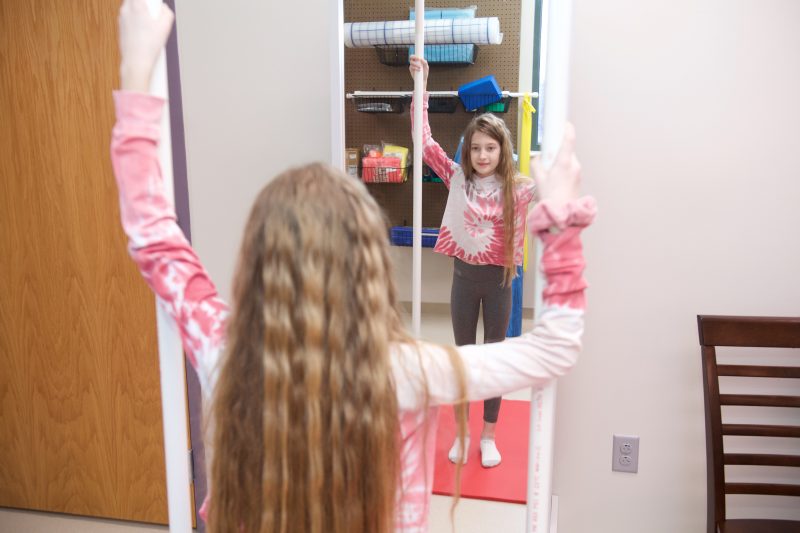
Elle uses a mirror and props to help her maintain proper alignment while practicing her exercises.
“Patients can look in the mirror and can see their deformity,” Jessica said. “When they are doing a corrective exercise they can see the physical/corrective change in their back and that it a huge motivation to comply when they see results.”
Before beginning Schroth therapy with Jessica, Elle had an initial consultation to learn about the method.
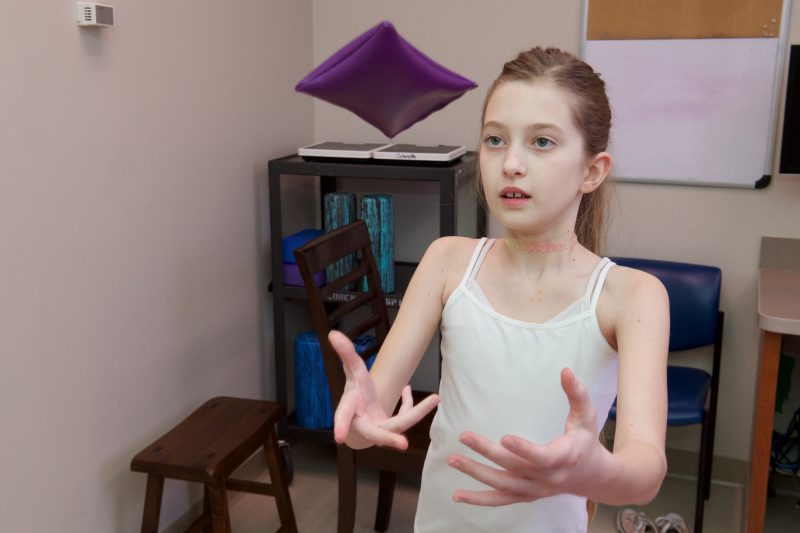
Prior to starting Schroth, Elle met with Jessica for an initial consultation so she could ask questions and participate in her own health care.
“I really wanted her to be a participant in her own care and set up good habits for life,” said Melanie. “Elle spoke up and asked questions. She understands this has the potential to help her.”
Elle saw Jessica twice a week in the hospital’s Sports Medicine Center for 8 weeks. After that, therapy was reduced to once a week and then once a month. Now, Elle has a home-based plan that Jessica created for her. Her goal is 5 days a week for 30 minutes a day.
“We worked with Jessica to build a program of the right mix of exercises in order to get the most benefit,” said Melanie. “And, the exercises are not so intense that they are miserable or impossible to do.”
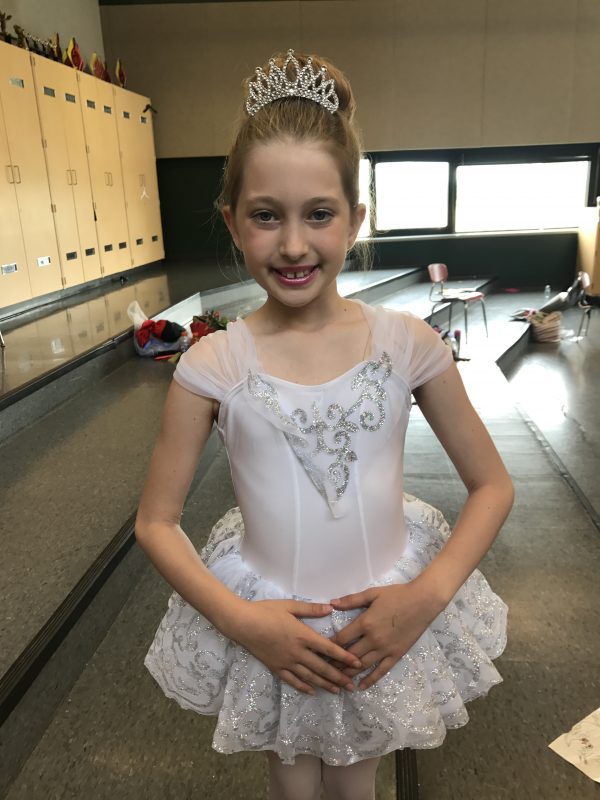
Dancing is one of Elle’s favorite activities.
Melanie says the goal is to be proactive and help prepare Elle for her growth spurt.
“We want her to be as strong as possible for when that occurs,” Melanie said. “She understands that this could all benefit her in terms of possibly reversing what’s there or giving her the tools to manage whatever scoliosis may bring. I want her to have some feeling of control over the situation.”
The family plans to install mirrors in their basement, where Elle does her exercises, so she can better see her form when doing her therapy.
“She had mirrors at the hospital and that was helpful for her when she needed to make little tweaks,” said Melanie. “She is great about getting into positions on her own, sometimes she needs me to help position the props.”
While it’s still early in Elle’s scoliosis journey, Melanie feels like her daughter is in good hands.
“We don’t know where this is going to take us,” she said. “We hope that the Schroth exercises add value over time. There are a lot of unknowns, but in the meantime we are thankful to have options and resources close to home to help us along the way.”
To learn more about the Spine Program at Akron Children’s, visit akronchildrens.org. To learn about the steps we’re taking to keep you and your family safe during the pandemic, click here.










